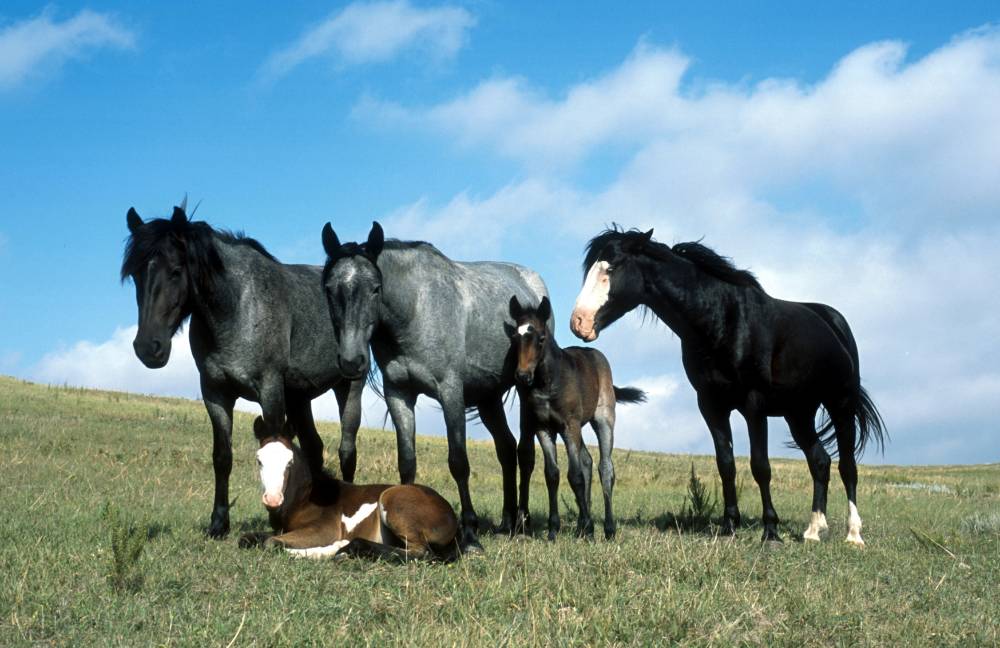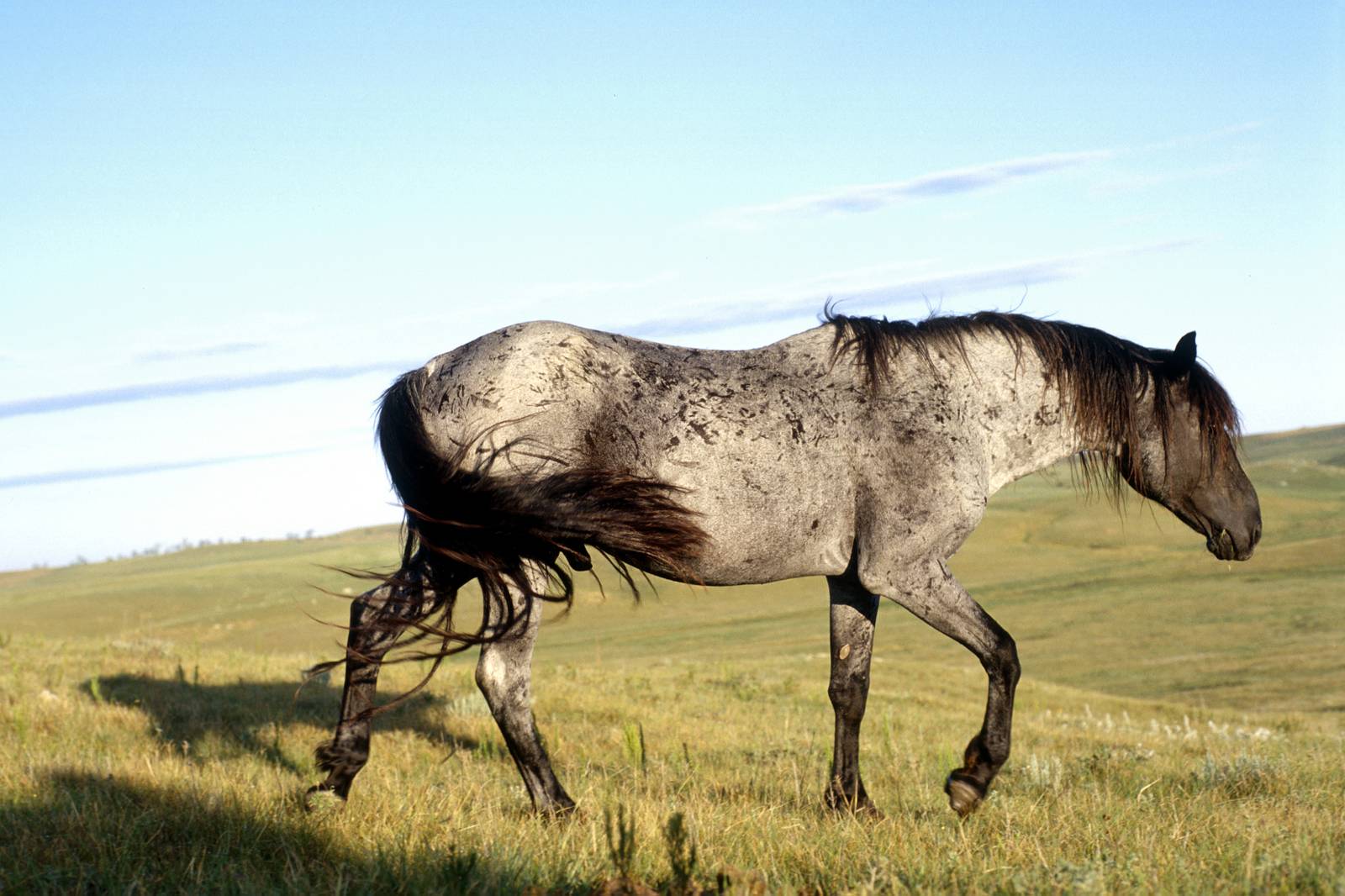Nokota Horses
The North Dakota Badlands in the United States are home to the Nokota breed of wild horses, who adapted to the area known for their harsh terrain, long, very cold winters, and unpredictable weather. Nokotas were originally Spanish horses crossed with domestic horses introduced by European immigrants, but they soon turned feral due to the harsh Badlands environment.
Figure 1. Image provided by Seth Zeigler at Nokota Horse Conservacy.
They have several traits in common with the Mustang horse breed because of their ancestry to Spanish colonial horses. Their robust physique sets them apart from other horse breeds, and they are well-known for their hardiness and agility. Their coat colors vary, and they have a stature of approximately 14–15 hands.
There are differences in the look of the two types of subgroups of the Nokota breed: ranch and traditional. Conventional Nokotas are thought to have a more feral appearance, akin to the original Badlands feral horses. Ranch Nokotas have more refined traits as a result of the gradual introduction of different breeds.
Figure 2. Image provided by Seth Zeigler at Nokota Horse Conservacy.
Although once richer in population, the Nokota breed has since experienced endangerment, where roughly 1,000 horses still live. Although a rarity, this historically noteworthy breed is useful for a variety of tasks, such as ranch work, competitive activities, and trail riding.
Created in 1999, the Nokota Horse Conservancy aims to protect the breed and stop the horses from disappearing from the wild. The Conservancy has been crucial in encouraging the breed's adoption, managing the herds, and educating the public about Nokota horses. They also keep the breed's registry up to date.
Registries and Breed Associations
The Nokota Horse Conservancy®
P.O. Box 761
Linton, ND 58552
Tel: (701) 484-6024
Email: info@nokotahorse.org


